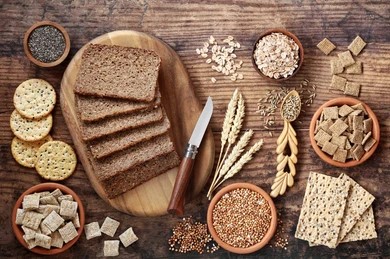How to Diet Plan and Weight Loss 10 Kg
Fast

Cover half the plate with non-starchy
vegetables at each meal. Vegetables
They should make up the bulk of your diet
as they are low in calories and contain many essential nutrients to keep you
healthy. Many experts recommend eating at least 4 servings of vegetables per
day, but you'll need to eat more if you want to lose weight. By planning meals
around generous portions of non-starchy vegetables, you'll feel full without
eating too much.
Non-starchy vegetables include
cauliflower, broccoli, carrots, zucchini, lettuce, asparagus, and many other
delicious foods that can be prepared in different ways so you won't get
bored of them.
The best serving of lean protein in every meal.
.And eggs, white fish (such as salmon and
tuna), some cuts of beef, and beans. Proteins are important for weight loss
because eating them helps your body build lean muscle and boosts your
metabolism.
A good rule of thumb to remember is that
a serving of most meats is about the size of your palm.
If you don't eat meat, there are many plant-based
meat alternatives available that are healthy options too
With
whole grains and lots of fiber.

If you want to see fast weight loss results from a diet, you should follow a low-carb diet however, instead of eliminating all carbohydrates, you can focus on eliminating refined carbohydrates and processed sugars and eating whole grains and plenty of fiber. Each food in this food category should have the smallest portion, just one serving or about 1/4 plate.
Healthy carbohydrates can be found in
fruits, legumes (such as chickpeas, lentils, and black beans), whole grains
(such as oats, brown rice, quinoa, or whole-wheat bread and pasta), and starchy
vegetables.
Stick to appropriate serving sizes of
different types of carbohydrates. Make sure you look at the nutrition labels on
your foods and measure them correctly before eating them.
Look
for low-calorie versions.

Toppings for your favorite foods are
often sneaky ways to show up in calories and carbs. For example, one tablespoon
of mayonnaise can contain 90 calories! Restock your kitchen with low-calorie
dressings and condiments that you use often.
You can also practice seasoning with
herbs and spices, which are naturally low in calories and high in flavor.
Supplement meals with a few small, nutritious.
Eating breakfast occasionally can be part
of a nutritious weight-loss diet because it will prevent you from feeling very
hungry and overeating. When you eat breakfast, make sure you're choosing foods
that are filling, high in nutrients, and low in calories.[1]
Examples of filling and healthy snacks
include: a medium-sized fruit, such as a banana or apple; A 1-ounce (28-gram)
serving of your favorite nuts; a small bag of carrots and celery with hummus;
and beef
Many snacks are available in 100-calorie
serving packs at grocery stores. Stock up on them and have one or two a day
just in case you get hungry.
Stop drinking sodas, and fruit juices.
An easy way to reduce the amount of
calories you consume in a day is to start with liquids because people often
forget or don't know how many calories are in their favorite drinks. To lose
weight fast, you will need to eliminate these drinks from your daily life.
Drink 2 to 3.25 kg (8 to 13 cups) of water throughout the day
Drink to help you lose weight because it
fills you up, reduces feelings of hunger, and has no hidden calories. Aim to
drink about 8-13 glasses of water.
Contrary to popular belief, water
retention, and bloating come from not drinking enough water, not drinking too
much.
A cup of a low-calorie drink for added flavor
Try out intermittent fasting routines.
Instead of spreading 3 large meals
throughout the day, try eating all of your meals in 8 or 10-hour intervals and
then fast until the next day. Choose a window of time, such as 11am to 7 or
9pm, and allow yourself to eat during that time. Outside of these hours, drink
only water or other non-caloric beverages.
Some studies show that intermittent
fasting increases metabolism and increases the amount of fat lost during
regular exercise, making it an excellent addition to any dieting plan.
An easy way to start intermittent fasting
is to choose 1 or 2 days a week to do it, then work your way up in 1- or 2-day
increments to do it full time.
The day and smaller meals towards the evening.
A meal eaten after 8 p.m. has the same
amount of calories as before 8 p.m., but you're more likely to not engage in
physical activity at night or near the bed. Instead of eating a small breakfast and
ending the day with a big dinner, eat a big breakfast and lunch and a small
dinner. This way, you can eliminate calories from these foods during your day.
If this doesn't work for your schedule,
you can also try eating several small meals throughout the day instead of 3
main meals. The goal is to eat enough to fill you up but not overeat because
you're hungry, which is when you start to feel hungry.
30 minutes of aerobic exercise a day
To change your diet, exercise. Cardio
exercises are those that get your heart rate up, which increases your
metabolism and burns fat. If you haven't done much cardio training before,
jogging or running, swimming, biking, or using a rowing machine are great ways
to start.[9]
When choosing your exercises, aim to
choose activities that are moderate for you. You'll need to get out of breath,
sweat, and get your heart rate up.





0 Comments